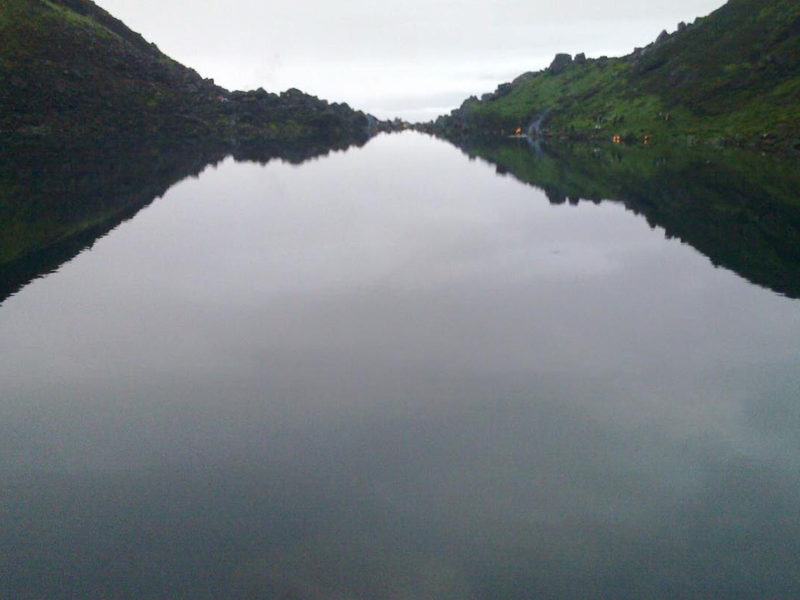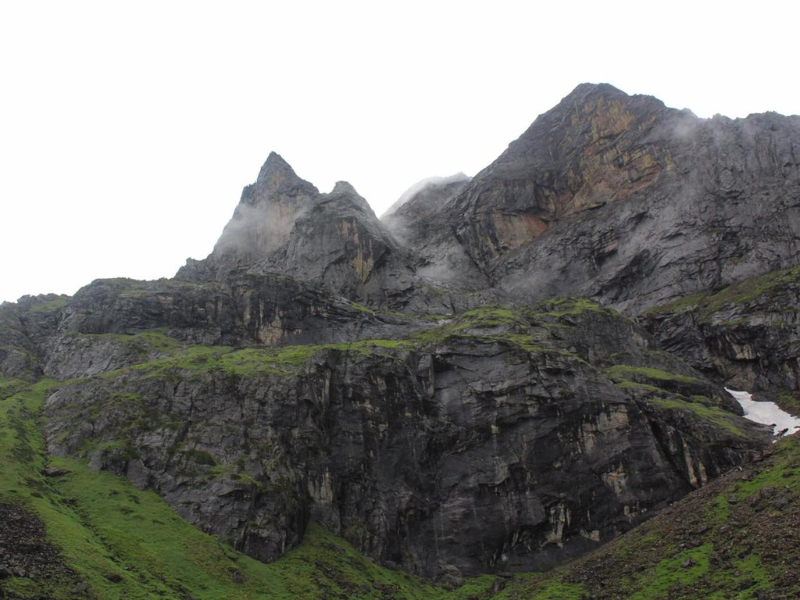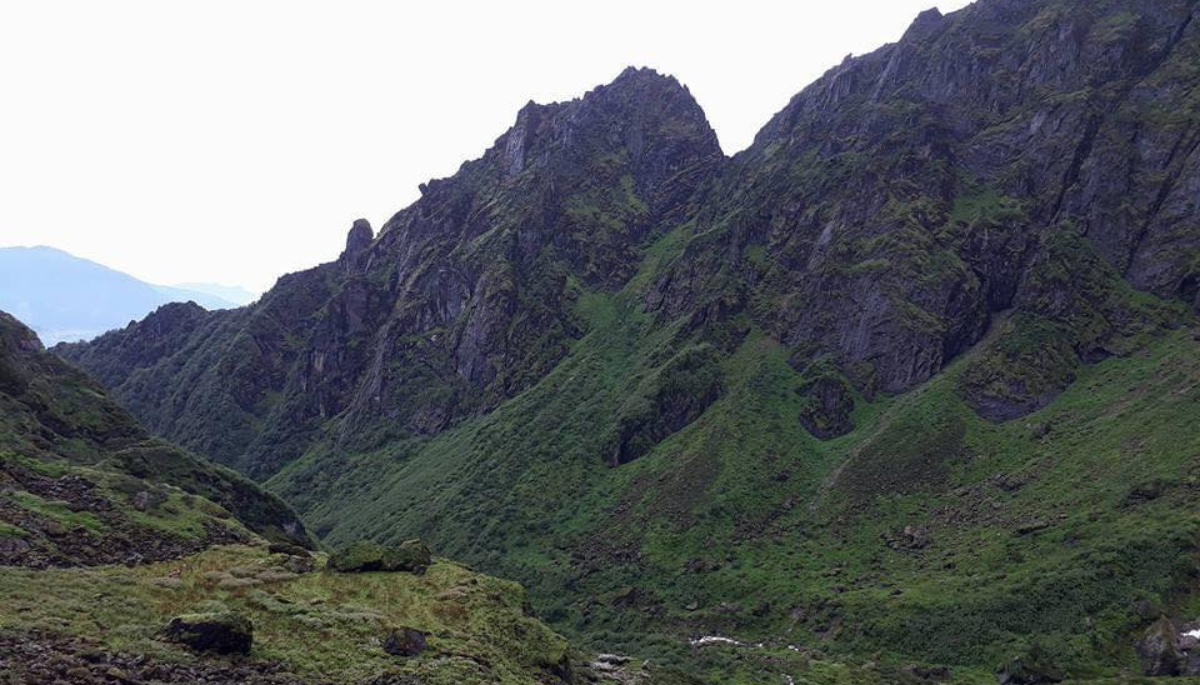If you prefer a Trekking route that combines culture, nature, and solitude, get ready to leave behind the usual tourist trails and embrace the Narad Pokhari Trek in Gorkha instead. Nestled in the mid-hills of western Nepal, this small and worthwhile trek leads to Narad Pokhari, a sacred alpine pond located at an elevation of around 3,300 meters above sea level.
Without all the trappings of a common Himalayan experience, the trail presents fewer travelers, serene forests, and majestic views of the ranges of Ganesh Himal, Manaslu, and Buddha Himal. It is best suited for those looking for silence, a real cultural experience, and worshiping nature.
Where is Narad Pokhari?
Narad Pokhari sits in the Gorkha district of western Nepal. The district has historical importance as the birthplace of King Prithvi Narayan Shah, the unifier of modern Nepal. Besides, Gorkha is also the doorway to renowned treks such as the Manaslu Circuit and Tsum Valley. However, Narad Pokhari is a less frequented mill.
After Rishi Narad, a divine sage in Hindu mythology, goes by the pond’s nomenclature. Local folks believe that Rishi Narad meditated here; hence, the pond is considered sacred. Pilgrims visit the pond during Janai Purnima (full moon in August) to offer prayers and take a dip in its icy waters.

Getting There
To start your Narad Pokhari Trek, you have to first arrive at Gorkha Bazaar, some 6–7 hours away by road from Kathmandu. Generally, the trek begins on foot from Barpak or Laprak, the two traditional Gurung villages reconstructed after the 2015 earthquake.
The trek takes approximately 3 to 5 days, depending on which trail you take and at what pace. You can also combine this trek with a stay in a cultural village, such as Barpak, Laprak, or even at some of the ridge trails further up, like Dharche Danda.
Trek Highlights
I. Untouched Nature and Forest Trails
The trail to Narad Pokhari passes through dense rhododendron forests, pine groves, and high meadows. The forest is ablaze in the colors of red, pink, and white rhododendrons during the spring months of March and April.
You are highly likely to encounter several species of birds, Himalayan langurs, and sometimes the distant calls of musk deer or faint sights of solitary leopards. The biodiversity is rich here and surprisingly undisturbed.
II. Mountain View
From the upward 3,000 meters, the view is mesmerizing and panoramic. Mt. Manaslu (8,163m) glitters in the northeast with Ganesh Himal, Buddha Himal, and parts of the Langtang range alongside. Sunrise and sunset over the mountains, breathtaking.
III. Narad Pokhari: Spiritually Revered and Beautifully Set
At the center of the entire trek lies Narad Pokhari, a small glacial pond, which holds spiritual significance to the locals. Set in an alpine bowl, the pond presents a view of the surrounding peaks when clear. It is ideal for meditation, a little rest, or bonding with nature.
Villagers from the surrounding area make pilgrimages here during Janai Purnima; they perform ceremonies and take the plunging dip into the freezing waters. Otherwise, you typically have the site all to yourself.
IV. Truly Authentic Cultural Experience
The great experience in such a trek is that one interacts with the Gurung and Ghale village folk. Stay in a local house where they will treat you to the local fare of dhido, gundruk, and sel roti, and you learn about their way of life and beliefs, as well as their struggles.
One will notice some Tibetan Buddhist influence, especially in villages such as Laprak, where colorful prayer flags waft in the wind and mani walls line the trail.
Best Time to Trek
Spring (March-May) and autumn (September-November) are the most desirable seasons for the Narad Pokhari Trek. During these months, the skies are highest, the trails are dry, and the views are fantastic. However, winter can also be beneficial for experienced trekkers who are not deterred by the snow and cold.
Never consider trekking during the monsoon season (mid-June to mid-September), for the trails are slippery and clouds mostly block the views.
Is it Difficult to Do?
Narad Pokhari Trek is graded moderately difficult. You don’t have to know technical climbing skills, but good physical health is necessary. The walk entails a few hours of walking every day, steadily going higher in altitude until you gain more than 3,000 meters. One must properly acclimate and drink enough water.
If you require porters or local guides, you can have them from Barpak or Gorkha, giving an enriched experience since they will share local knowledge.
Why Take the Narad Pokhari Trek?
So many treks are more famous in Nepal, such as Everest Base Camp and Annapurna Circuit, but the Narad Pokhari Trek is a testimony of authenticity, calmness, and spiritual strength. One could never be on this trek all alone because there is genuine hospitality, untouched nature, and an opportunity to walk in the footsteps of ancient sages.
Narad Pokhari is calling if a short, evocative, and serene Himalayan adventure is on your wish list.

Final Thoughts
The Narad Pokhari Trek Gorkha is a manifestation of pure natural wilderness and the Mother’s spiritual working in Nepal. From scenic views and sacred ponds to village life and alpine flora, this trek has to offer for the soul of the greatest adventurer.
Next time you choose to trek in Nepal, consider skipping the crowd and walking up this less-trodden path of Gorkha, never to be regretted.
You May Also Like: Scenic Treks Near Pokhara


0 Comment